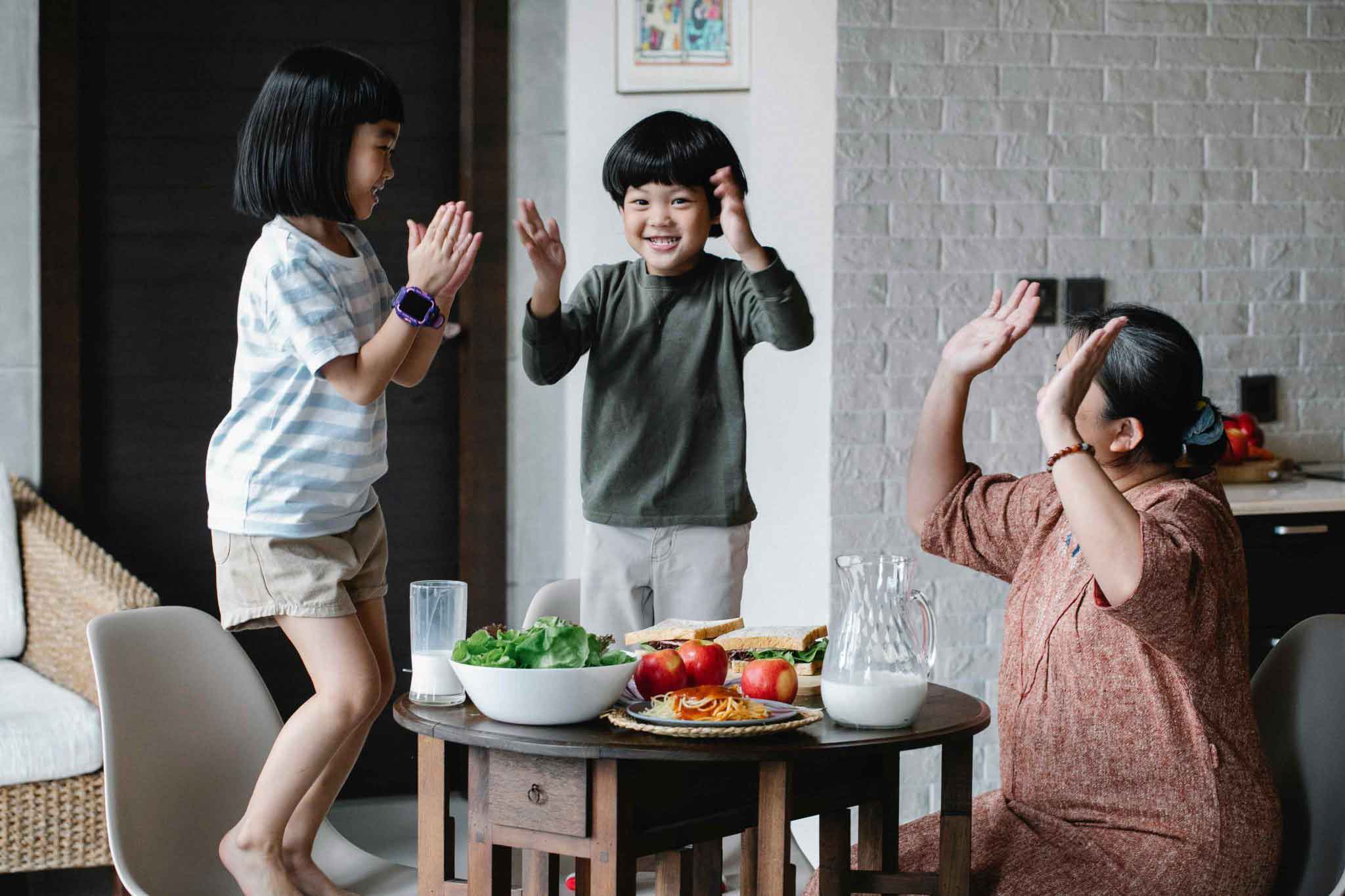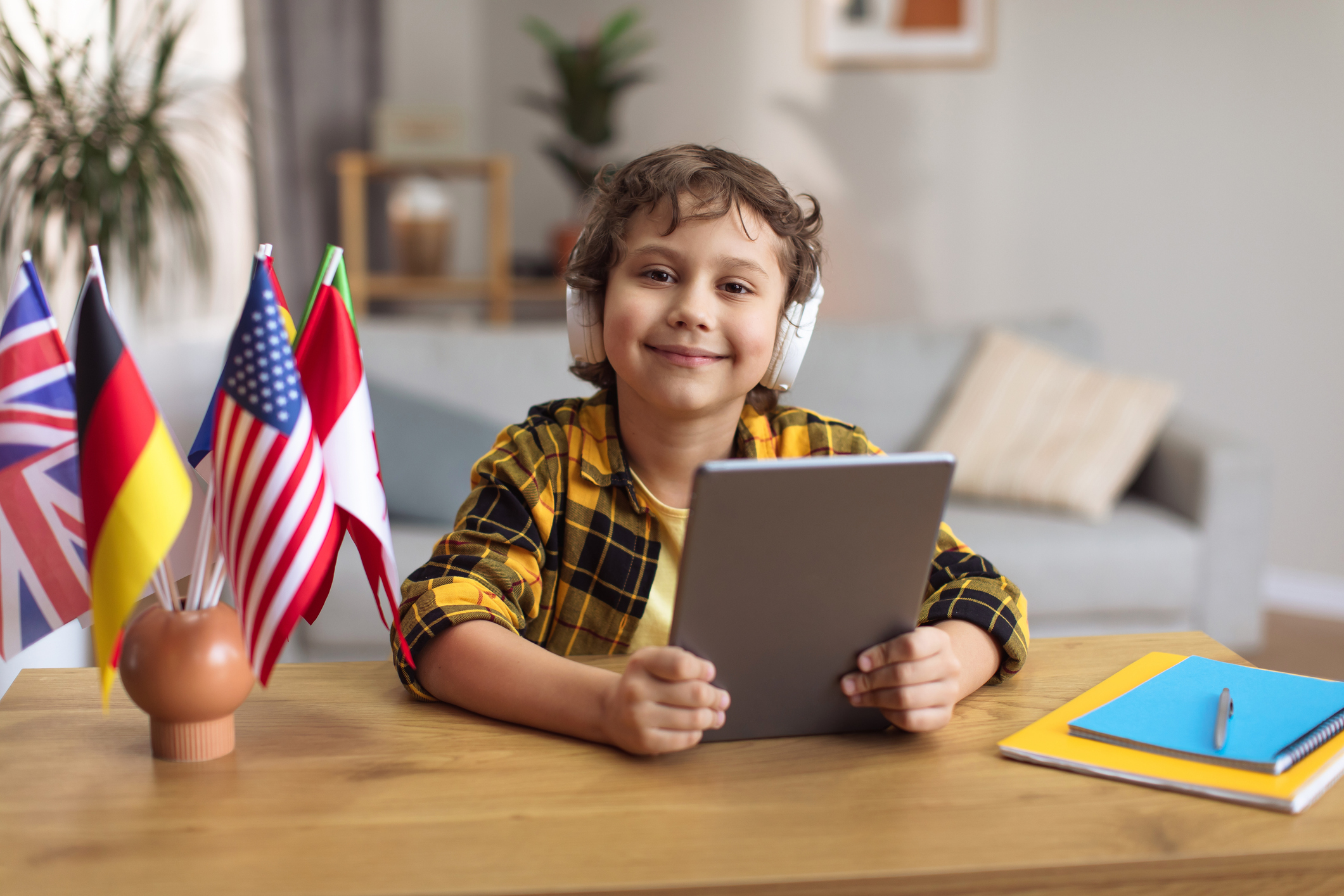How to Raise a Bilingual Child [Tips, Strategies, and FAQs]



How to Raise a Bilingual Child
Hoping to raise a bilingual child? It’s an admirable goal with many proven benefits! However, as you may already know, it isn’t exactly easy. Creating a bilingual home takes significant effort, consistency, and commitment — especially if you aren’t bilingual yourself.
So, where do you start? How do you successfully give your child the best chance at speaking two languages fluently? In this blog post, we’re going to show you!
Specifically, we’ll look at:
- The benefits of bilingualism according to scientific research on language acquisition and child language development
- 5 essential strategies to raising your kids to speak two languages
- Frequently asked questions about raising bilingual kids and bilingual development
Let’s get started!
Benefits of Raising Bilingual Children
If you’ve ever traveled to a foreign country where you don’t speak the local language, we’re sure you already have some ideas about the benefits of raising a bilingual child!
Yet, your child being able to speak a foreign language with native speakers in a foreign country isn’t the only benefit. According to scientific research on bilingualism, the benefits of being bilingual also include:
- Cognitive advantages. Research has indicated that people who speak more than one language have better attention spans and an easier time switching between tasks.
- Social understanding. Scientists studying bilingual preschoolers found that bilingual children have an easier time understanding people who come from different backgrounds and have higher levels of emotional intelligence.
- Memory. Children who speak two languages have been found to have a better “working memory“, which gives them advantages with things like mental calculation of numbers and reading comprehension.
- Problem-solving skills. According to a study on bilingual toddlers, children who speak more than one language have better cognitive flexibility than their monolingual peers. This advantage makes it easier for those children to eventually solve complex tasks.
- Diversity. The ability to speak multiple languages gives children access to other cultures and diversifies their perspective of the world. Research suggests that this benefit can help your child more easily navigate intercultural relations.
5 Tips to Raise a Bilingual Child
Want your child to experience all of the benefits of bilingualism that we just discussed in the previous section? Here are 5 tips and strategies to help you raise a bilingual child.
#1 Start Introducing the Target Language to Your Kids Early

Did you know there is a “magic window” to teach your kids languages? Well, according to research on language development, your child has the best chance at learning a language between the ages of 0-8. This critical period is when their brain is most equipped to soak up and retain the sounds, grammar, and overall structure of the language.
Is it possible for your child to learn a second language after the age of 8? Of course! However, it will likely be more challenging. The earlier you start, the more likely you’ll be to raise a bilingual baby!
To work toward that goal, you can do things like expose your child to music and speak baby talk in the second language. As they grow, you can also try making short conversations, introducing them to cultural activities, and reading stories in the target language.
#2 Use a Single Strategy to Teach Your Kids a Second Language

There are many tested strategies for raising bilingual children. For example, there is the one-parent one-language approach in which one parent speaks to the child in one language and the other parent speaks to the child in another language.
Since you’d create a truly bilingual home for your child, the one-parent one-language approach tends to deliver the most consistent results. However, it requires significant effort. The strategy may also be more difficult if both parents are not fluent in both languages.
The strategy you choose to teach your kids a second language is less important than how consistently you use it. If you introduce two languages to your kids, they need to know when they’re expected to speak each one.
#3 Focus on Quality and Quantity When Introducing a Language to Your Kids

Will your child learn how to speak a second language just by listening to music or watching TV in the target language? Probably not!
The quality of language exposure is a critical factor in determining whether your kids truly become bilingual. Conversation and other interactive teaching methods like reading together are the best choices. Meanwhile, low-quality television shows are not particularly helpful for introducing a second language to your kids.
Quantity of exposure to the language is also important to build vocabulary and grammatical development. There is no secret, the more you speak the language to your child, the larger the vocabulary size.
#4 Get Help from Family, Friends, and Neighbors Who Speak the Target Language

While you can teach your kids a second language alone, it’s easier with help. Ask your family to interact with your children in the language you are trying to teach. You can also ask your neighbors to help, particularly if you agree to do the same with their children.
Asking for help promotes variety in the second language. Your kids will have opportunities to engage with more people, thus introducing the language to your kids in different ways. Not only does this build second language vocabulary, but it also helps them understand how the language works on a fundamental level.
If you don’t know anyone who speaks the language, consider looking for a nanny or tutor who can. You may also want to look into enrolling your child in a school or program that offers bilingual education.
#5 Choose Bilingual Education to Teach Your Kids a Second Language

Working with a bilingual education program from an early age helps to truly immerse your kids in the second language.
Programs like LingoCircle offer online bilingual school and after-school programs with small class sizes and native teachers. During the classes, children have the opportunity to not only learn how to speak the second language but also things like:
- Learn to sing songs and read stories in the foreign language
- Improve communication in the language by interacting with other children
- Gain authentic exposure to fun cultural activities
Parents can increase the quantity of quality language exposure their child receives every day as early as 3 years old by choosing these programs.
FAQ about Raising Bilingual Children
Once you get started, we’re sure you’ll have many additional questions about how to raise a bilingual child. Here are a few of the most common questions parents have.
Is it possible to raise a bilingual child in a monolingual household?
Yes. Raising a bilingual child in a monolingual household is definitely possible! You’ll need to put in more effort to expose your child to the second language, but you can do things like enrolling your child in bilingual education programs to overcome this obstacle.
Is it too late to start raising a bilingual child if they’re already over the age of 8?
Not at all! As we mentioned earlier, early exposure (before the age of 8) to the second language is best according to research on language acquisition and development. However, that doesn’t mean all hope is lost if you have older children.
Anyone at any age can learn how to speak a different language. Older children learning languages will just require more time, effort, consistency, and exposure to the new language.
Will raising children to speak more than one language confuse them?
Many parents used to worry that bilingual kids experienced disadvantages due to needing to think in two languages. However, science has proven time and time again that this is not true.
Bilingual children are incredibly sensitive and perceptive of the differences between languages. Rarely are they confused or put at a disadvantage for speaking more than one language. In fact, as we showed earlier, the ability to speak two languages is actually an advantage!
Is code-switching normal or should it be discouraged?
Sometimes, people who speak multiple languages start code-switching. Not sure what that is? Basically, it’s when you mix languages in a single conversation or sentence. For example, someone who speaks English and French may start a sentence in French but occasionally use English words.
If you only speak one language, you may think it sounds odd or wrong when your child does this. However, it’s a completely normal part of the bilingual journey. People all over the world who learn to speak multiple languages from an early age do it.
Key Takeaways
Raising a bilingual child will take some work, but it’s definitely worth the effort! As we’ve shared in this blog post, children who can speak more than one language tend to have cognitive and social advantages over monolingual children.
If you want to help your child become bilingual, follow the 5 tips we’ve shared:
- Start introducing the target language to your kids as soon as possible
- Use a single strategy, like the one-parent one-language strategy, to create a bilingual home environment
- Focus on quality and quantity of exposure when introducing a new language to your kids
- Get help from family, friends, and neighbors who speak the target language — especially if it’s their native language
- Consider enrolling your child in a bilingual education program like the ones we offer at LingoCircle. Click here to get your child’s first lesson for free!


Simple Ways to Learn a Second Language at Home
Get resources and tips to help supplement your bilingual education journey at home.
By providing your email you are signing up to receive emails from Bilingual Bebe. Privacy Policy







